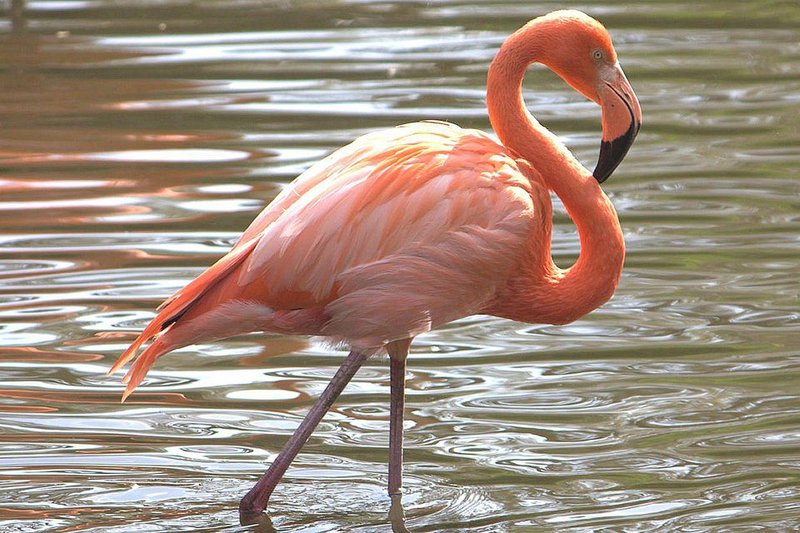
Picture this: you’re sitting outside on a warm evening, the sun dipping below the horizon, and a group of flamingos is gathered nearby. You might hear soft honks, grunts, or even a chorus of squawks. What does it all mean? Let’s dive into the world of flamingo vocalizations and discover the hidden languages of these fascinating birds. Spoiler alert: communication in the animal kingdom is more complex than you might think!
The Basics of Flamingo Sounds
Flamingos use vocalizations primarily to communicate with one another. Their sounds can be broken down into a few categories: calls, grunts, and honks. Each type of sound has its specific purpose.
For instance, calls are often used in a social context. When a group is together, they might use these sounds to maintain contact. Imagine a group of friends chatting and laughing; without their words, they might feel disconnected. In flamingos, these calls help maintain their bond while foraging or resting in their habitat.
Grunts and honk-like sounds are typically more pronounced. They might signal alarm or indicate a need to get attention from a mate. Think of it like raising your voice in a crowded room to make sure someone hears you. Flamingos have a social structure, and their vocalizations help them navigate relationships within their flocks.
Flamingos aren’t just casual chatterboxes; their vocalizations play a significant role in courtship rituals. During mating seasons, you’ll notice that their sounds become more pronounced and elaborate. Males often perform vocal displays to attract females, showcasing not just their physical beauty but also their vocal prowess.
Imagine a contestant on a singing competition vying for the top spot. Similarly, male flamingos will work to impress potential mates with intricate calls. These vocalizations are often accompanied by synchronized dancing and head-flagging displays, creating a captivating spectacle of sound and movement.
This complex vocal behavior isn’t just for show; it signals health and vitality. A strong, clear call can indicate a healthy individual, making them more attractive to potential partners. So, if you ever witness a flamingo putting on a vocal show, you’re witnessing a crucial part of their mating dance.
Alarm Calls: The Flamingo’s Defense Mechanism
Like any other animal, flamingos need to stay aware of their surroundings. When danger is near, they don’t just scatter; they have a system of alarm calls that alert others in their group. These calls are often sharp and piercing, meant to grab attention quickly.
Picture a dog barking at the sound of a stranger approaching. That’s similar to how flamingos react when they sense a threat. They rely on these vocalizations to warn each other of potential dangers, like predators lurking nearby.
Interestingly, flamingos can also modify their alarm calls based on the level of threat. A mild disturbance might elicit a softer grunt, while a more significant danger could prompt a loud, frantic call. This ability to adjust their vocalizations shows just how in tune they are with one another.
The Social Dynamics of Vocalizations
Flamingos are social creatures, often living in large colonies. Their vocalizations help maintain order within these communities. Just like we might use tones and inflections to express various feelings, flamingos modify their sounds to reflect their social interactions.
For example, when two flamingos bond, they might vocalize softly to each other. This is similar to the way humans share secrets or confide in close friends. On the other hand, if a flamingo feels threatened or is asserting dominance, the vocalizations can become more aggressive.
It’s fascinating how the social structure of a flamingo colony can impact their vocal behavior. Some studies suggest that more dominant flamingos may have deeper or more resonant calls, which can play a role in hierarchy. The subtle differences in their vocalizations help maintain social harmony and clarify who’s who.
How Flamingo Vocalizations Change with Environment
You might be surprised to learn that the environment influences how flamingos communicate. In different habitats—whether it’s a crowded wetland or a relatively quiet lagoon—their vocalizations adapt accordingly.
In busier areas, for example, flamingos may raise their voices and produce louder sounds to be heard over the backdrop of splashing water and gusting winds. Imagine trying to talk over a concert; you’d likely have to raise your voice!
Conversely, in quieter settings, their calls can be softer and more intimate. This adaptability not only helps them stand out but also ensures that their communication remains effective in various situations.
Vocalizations and Migration
For flamingos, migration isn’t just about finding food or warmer climates; vocalizations also play a crucial role during their journeys. As they travel, flamingos use calls to stay connected with their flock. This is especially important during long migrations, where visual contact might be limited.
Vocal communication helps them maintain group cohesion, preventing any lone bird from getting lost. Just like when you use a group chat to coordinate plans with friends, flamingos rely on their calls to make sure they’re all on the same page.
During migration, their vocalizations can change slightly, typically becoming more frequent. This increase helps reinforce their bonds and keeps everyone together, showing just how vital communication is in their social structure.
Understanding Flamingo Language: What Can We Learn?
If you take a step back, the world of flamingo vocalizations can teach us a lot about communication in nature. Their diverse sounds highlight how animals have developed unique ways to express needs, fears, and emotions.
By observing flamingos, we can appreciate the complexity of their social lives and how they maintain relationships through sound. The next time you see these beautiful birds, listen closely. Every honk and grunt might just tell a story about their interactions, much like how we use words to connect with one another.
In conclusion, flamingo vocalizations are more than just random noises; they are vital forms of communication that shape their social lives, relationships, and survival. So, the next time you encounter flamingos, consider the conversations happening around you. There’s a lot more going on than meets the eye—or ear!

